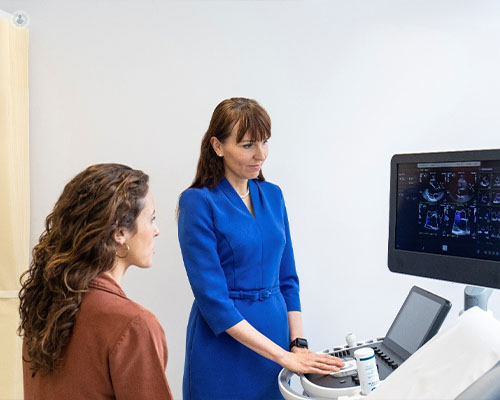Breathlessness and swelling: could it be a sign of valve disease?
Escrito por:If you've noticed that you're becoming more breathless over time, or if you’ve started to see swelling around your ankles, it might be more than just getting older or being out of shape. These symptoms can sometimes be a sign of serious heart problems, particularly valvular heart disease. Heart valve disease progresses silently, but as it worsens, it can lead to heart failure—a condition where the heart can't pump blood effectively. The good news is that with modern imaging techniques, such as echocardiography (often called an “echo”), doctors can diagnose these issues early and recommend the right treatment to prevent further damage. In this article, renowned cardiologist Dr Gosia Wamil dives deep into the signs of heart valve disease and how it is diagnosed.

(Photo courtesy of Dr Gosia Wamil)
Understanding heart valve disease
Heart valve disease occurs when one or more of the valves in your heart don’t work properly. These valves are like doors that open and close to control the flow of blood through your heart. If a valve doesn't open fully, it can obstruct blood flow, or if it doesn’t close tightly, blood can leak backward. Over time, these problems can strain your heart, leading to symptoms like breathlessness, fatigue, or swelling in your legs and ankles.
The role of echocardiography (echo) in diagnosing valve disease
Echocardiography is a key tool in diagnosing heart valve disease. This test uses ultrasound waves—similar to those used in pregnancy scans—to create detailed images of your heart. An echocardiogram can show how well your heart and valves are working. It’s a comprehensive exam that takes about 30-45 minutes, during which the cardiologist can assess the size, shape, and function of your heart, as well as the condition of your heart valves. The best part is that echocardiography is non-invasive, painless, and doesn’t involve any radiation, so it can be repeated as often as necessary without any health risks.
Why early diagnosis is crucial
If you’re experiencing progressive shortness of breath or swelling around your ankles, it’s essential to get tested with an echocardiogram. These symptoms could indicate that your heart is struggling due to valve disease, and catching it early means your doctor can intervene before the condition worsens. Without treatment, valve disease can lead to heart failure, a serious condition that significantly impacts your quality of life.
Take action: see a cardiologist
If you notice any of these symptoms, don’t ignore them. See a cardiologist and ask about getting an echocardiogram. Early diagnosis and treatment can make a huge difference in managing valve disease and preventing heart failure. With advancements in imaging technology, we have powerful tools to diagnose and treat heart conditions before they become life-threatening. So—if you’re feeling breathless or noticing swelling, don’t wait; get tested and ensure your heart is healthy.
If you are experiencing chest pain or suspect heart problems, book with Dr Wamil for consultation via her Top Doctors profile.


